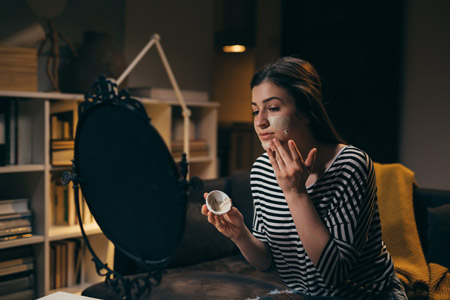


Humidifiers for a Healthy Home
Managing winter colds, flu, allergies, and other seasonal afflictions may have you searching for a humidifier. A humidifier is a machine that adds water to the air around it — making the air around the device more humid.
Humidifiers come in many different shapes and sizes and are often brought out during winter months when the air becomes more dry. Humidifiers are a great tool to combat a number of winter health problems but they sometimes can make some conditions worse. Read on to learn more about the benefits and risks of humidifiers.
Treating Seasonal Dry Skin with a Humidifier
Dry skin often flares in the winter when the air is cold and dry. By adding moisture to the air, a humidifier can treat dry skin and the cracking, flaking, itching, and bleeding that often comes with it.
If you suffer from winter dry skin it’s a good idea to keep a humidifier turned on inside whenever your heater is running.
Combatting Cold and Flu Symptoms with Humidifiers
Humidifiers can also help clear congestion and ease a sore throat. Dry air can be irritating to the nose, sinuses, and airways. Since humidifiers add moisture to the air, it is less likely to be irritating. Moisture also helps dislodge phlegm to clear congestion and make coughing more productive.
Some viruses thrive in dry air so running a humidifier can also help prevent the spread of illness. Humidity between 40-60% has been shown to slow transmission rates of COVID-19 and humidity of 40% makes the flu virus less infectious.
When Not to Use a Humidifier
Humidifiers aren’t good in all situations, however. While some viruses are less virulent in humid air, other irritants thrive in it.
Dust mites and mold prefer moist air and can cause allergic reactions and lung issues. The water used in a humidifier can also be a problem If the water isn’t changed often or the vessel holding it becomes dirty. Germs can grow in the dirty water and then get misted into the air. It is very important to follow the manufacturer's instructions and change the water often, and usually around every 3 days.
Cool-Mist vs. Warm-Mist Humidifiers
If you think a humidifier would be a good addition to your house, the next decision is between a cool-mist humidifier and a warm-mist humidifier. As the name implies, a cool-mist humidifier emits usually a room-temperature mist into the air. They are good for clearing congestion and can be used year-round but get dirty more quickly than warm-mist humidifiers. They are also a safer choice to use around children as the water won’t scald.
Warm-mist humidifiers are nice to use in the winter as they add warmth to the air as well as moisture. They are also easier to keep clean than cool-mist humidifiers. Warm-mist humidifiers, however, may make your sinuses swell, which can worsen congestion. They also can be a safety risk to children due to the hot steam they produce.
From allergies to colds and everything in between, humidifiers can be an excellent non-medication therapy for annoying symptoms. Before making an investment in a humidifier for your home, be sure to consult with your doctor to ensure that is the best, most effective, and safest option for you.


.jpg)
.jpg)
.jpg)


















.jpg)





















.jpg)

















.jpg)


























.jpg)
.jpg)
.jpg)









